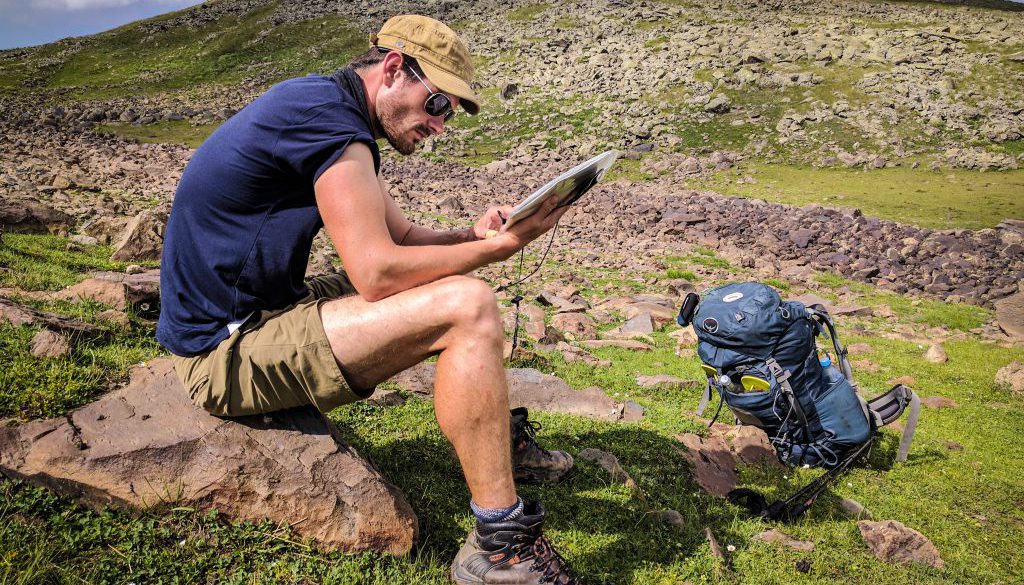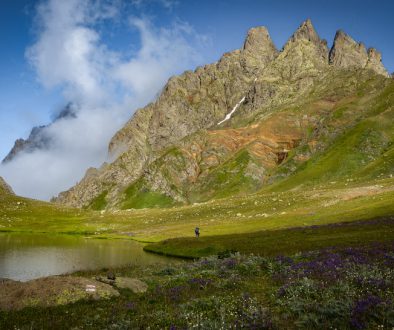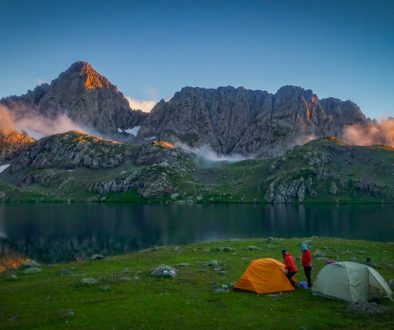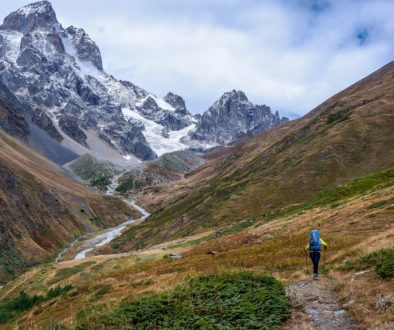Maps For Hikers Q&A: Responses To Your Questions About The Campaign (4 Days To Go!)
With a nerve-wracking 4 days left until the deadline at midnight PST this Sunday, we want to thank the 211 backers who have helped us reach an amazing 90% of our USD $12,900 target. Every contribution, no matter how small, is another step closer to the goal!
Today we want to try and answer some of the questions we’ve been receiving about the map, the campaign, and the principles behind it. If you haven’t familiarised yourself with the campaign and what we’re aiming to achieve, perhaps do so now by clicking here before you continue reading.
1. Who is this map for?
This map is for anyone considering, planning or undertaking a hike of any length in Dilijan National Park or its surrounding territory, on the TCT or otherwise.
This includes not just the obvious – tourists going hiking – but also local hikers, birdwatchers, mountaineers, scientists, conservationists, students, and anyone else who needs detailed and accurate information about what’s on the ground in the full territory of the park. It will also be invaluable to people interested in mountain-biking, horse riding, ski touring, snowshoeing or any other outdoor activity.
So in fact, while we’re positioning it as a hiking map, the list of people who will benefit is considerably larger.
(Needless to say, it’s also for people who just love maps…)
2. Why Dilijan National Park?
Simply put, Dilijan National Park is the first area of Armenia we think is ready to be promoted to the global community of hikers. Publishing a map is a big statement: the trail infrastructure is there, the supporting services are in place, and now we’re putting the tools out there for you to go and enjoy it. The fact that the first official section of the Transcaucasian Trail in Armenia passes through the park is a nice bonus!
By the time the map is published, we’re hoping other hiking ‘hubs’ will be approaching a similar level of readiness, so we can replicate the format there.
3. Are there seriously no other maps like this available in Armenia?
Well, it depends on your definition of ‘maps like this’.
If you mean topographical maps at this scale (1:25,000), then if you are willing to count a CD-R secretly handed to you containing scans of classified Soviet military maps stolen from a Russian freight train captured by the Latvians in 1991, then yes, maps like this do exist. Unfortunately they’re half a century out of date, use defunct Russian place names, are labelled in Cyrillic – and, as you may have gathered, are somewhat difficult to find. And by difficult, we mean impossible.
We have also come across a more modern set of 1:100,000-scale topographical maps of Armenia (produced by a local cartographer and derived from the same Soviet-era military maps), which are good for light use during general sightseeing, but in mountainous terrain a scale of 1:100,000 is not generally detailed enough to accurately navigate by.
So, no. There are seriously no other maps like this available. Yet.
4. What’s the advantage of a paper map over a smartphone app or GPS unit?
The first advantage is accuracy. The maps of the region you’ll find on hiking apps for smartphones can of course be ‘zoomed in’ almost endlessly, and this may give you the impression that they are therefore more ‘accurate’. But the truth is actually the opposite. For example, if you zoom in on the northern part of Dilijan National Park above Hovk village, you’ll see plenty of steep-looking but smooth gradients. Many of these are, in fact, vertical rock faces several hundred feet high!
Why aren’t they shown? Because the missing detail in the low-quality terrain models currently used by these maps is automatically ‘filled in’ by computers, and the result is often misleading. Needless to say, the distinction between a vertical cliff and a smooth hillside – in thick fog and when you’re cold and tired at the end of a long day – is rather an important one! In the same way, traced satellite imagery can rarely replicate the detail of an actual, physical, on-the-ground survey with GPS trackers and cameras and people taking notes.
The second advantage of a paper map is the one we summarised on the campaign page: “They neither crash, lose signal, nor run out of battery.” Buy a decent map and put it in a good quality waterproof map case, and you’ll have a navigation tool you can depend on, and which will survive almost any amount of abuse.
Of course, some hikers will still choose to navigate using phones or GPS units – just as others will prefer to trust only the signposts, and a few will be comfortable relying solely on their wits. Our view is that the option to navigate by map and compass should be available to everyone, even if it’s sometimes supplemented by GPS. Currently that important option isn’t available, and that’s what’s driving this effort.
5. What are the specifications of the map – dimensions, paper type, etc?
If you’re familiar with the look and feel of the British OS (Ordnance Survey) 1:25,000-scale maps, you will find the finished map to be similar in many ways, and one way will be in the type of paper used. A map designed to withstand outdoor use requires specific attention to durability, and so we’re using a high grade 90gsm paper recommended for military use (both on land and at sea, apparently) – the exact same paper, in fact, as the OS maps themselves. So it’s tough, but it’s not over the top: after all, the thing still needs to fold up and fit in the lid of your backpack!
In terms of dimensions, when unfolded it will measure 1270×950mm (50×37.5″). At the 1:25,000 scale, in which 4cm on the map equals 1km on the ground, this means it will cover over 700km², including the more or less complete territory of the national park.
Incidentally, despite the map showing an area just 31km (19 miles) wide from east to west and 24km (15 miles) tall from north to south – the shape of the protected area and the layout of the trail network means that more than 200km (125 miles) of established and signposted hiking trails can still be displayed.
6. What will the design of finished map look like up close?
The cartographic style is still under development, but draws from that of well-known traditional topographic maps for civilian use, such as the British OS (Ordnance Survey) maps and the Swisstopo series.
However, because we’re also targeting hikers as a specific user group, we’re also introducing a few extra types of information that wouldn’t necessarily otherwise make it onto a ‘pure’ topographical map but are undeniably useful for hikers, such as named and branded trails, amenities such as transport and medical services, and a little more emphasis on cultural-historical sites than might otherwise be the case.
Another influence on the design is the fact that we are producing an English-language map for a non English-speaking region which also has a unique alphabet! For most named features, including towns and villages, mountain ranges and peaks, rivers and lakes, and other such things, we’ve included the name both as it’s usually represented in English and how it’s written in the local language and script. This is so that – when you’re out navigating and you want to check with a local – you’ll have the best possible chance of finding words you both understand.
Design justifications aside, the best way to see a sample of how the map might look is to check out the close-up example we’ve included half-way down the campaign story.
7. Why such an emphasis on open-source data in your map-making process?
From the early days of the project, we realised that open-source map data – that is, points of interest, roads and paths, amenities, geographical details and other information added by members of the public to a giant, shared database – was the best possible starting point for creating comprehensive maps like this one. So we’ve already invested over a year in improving the open-source mapping for Dilijan National Park alone.
But we’re also planning to help ‘build local capacity’, as the international development community likes to call it. In real terms, this means running real-life workshops in education centres around Armenia to teach tech-savvy teenagers how to go out and map their own local areas using the phones in their pockets. With the open data model, every contribution they’ll make will become available to everyone pretty much instantaneously. Imagine the results if the whole world was doing that? Well, you don’t have to: it’s called OpenStreetMap.
(You can sponsor one of these mapping workshops – it’s one of the higher-value perks for those who want to support the campaign with more than just a pre-order of the map.)
8. How will the Transcaucasian Trail benefit from this map in the long term?
There are a few simple financial benefits for the Transcaucasian Trail. To begin with, 5% of the RRP for each copy of the map sold will be donated to the TCT Armenia NGO to carry out routine trail maintenance in the Dilijan area. The Transcaucasian Trail Association will also get a commission for each copy sold via the website.
But what we’re really trying to do is lay a big foundation stone in the overall mission of the Transcaucasian Trail. This is just one map – but there will eventually need to be dozens, covering the whole region crossed by the TCT. How are we going to make that happen? Well, the same way any big thing is achieved: one step at a time. So you could say that this is step one, at least as far as map-making goes. After this, we’ll have a product pipeline that can be replicated, region by region, trail section by trail section.
9. Will you be mapping areas other than those crossed by the Transcaucasian Trail?
If there’s sufficient demand, and the idea fits with the Cartisan vision, then there is no reason why we would not support the production of maps serving different purposes or for other organisations. In case you’re interested in a conversation about this, feel free to email Alessandro directly on [email protected], or fill in the website contact form with a note about what you’re thinking.
10. I don’t actually need or want a copy of the map, or any of the other perks – how else can I support your work?
It isn’t compulsory to claim a perk through the campaign – you can instead simply make a one-off donation by clicking the big pink ‘Back It’ button at the top of the campaign homepage. (We’ll probably send you a thank-you card anyway, though!)
* * *
If you have any questions of your own, feel free to post a comment below and we will furnish you with a hopefully-helpful response! In the meantime, with just days to go until the deadline, please consider a pledge to help us reach our crowdfunding goal – our gratitude will know no bounds.






